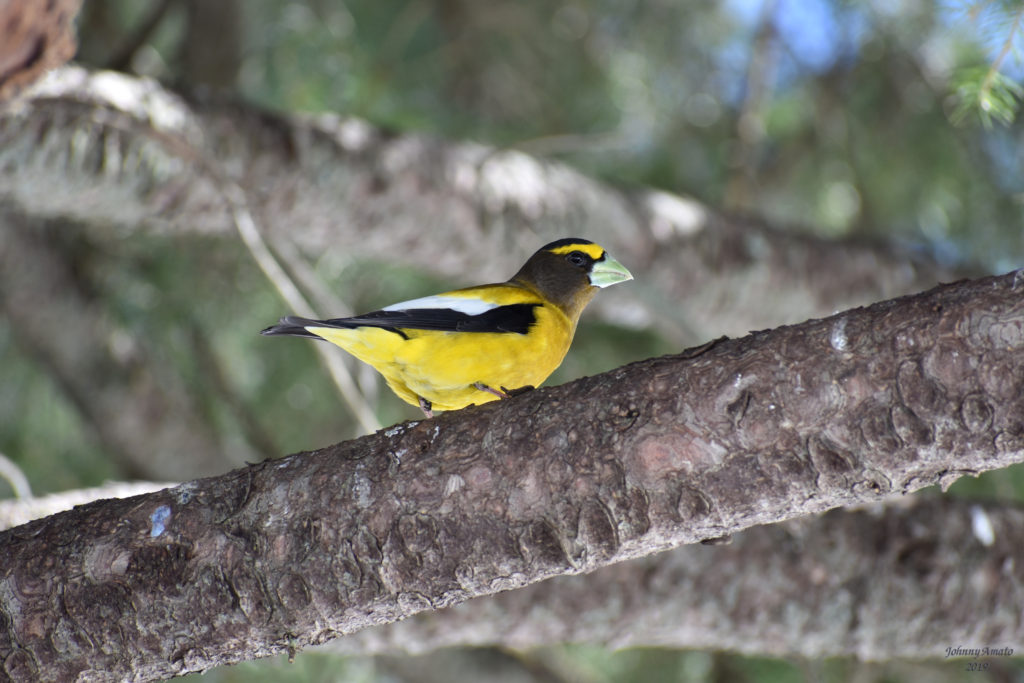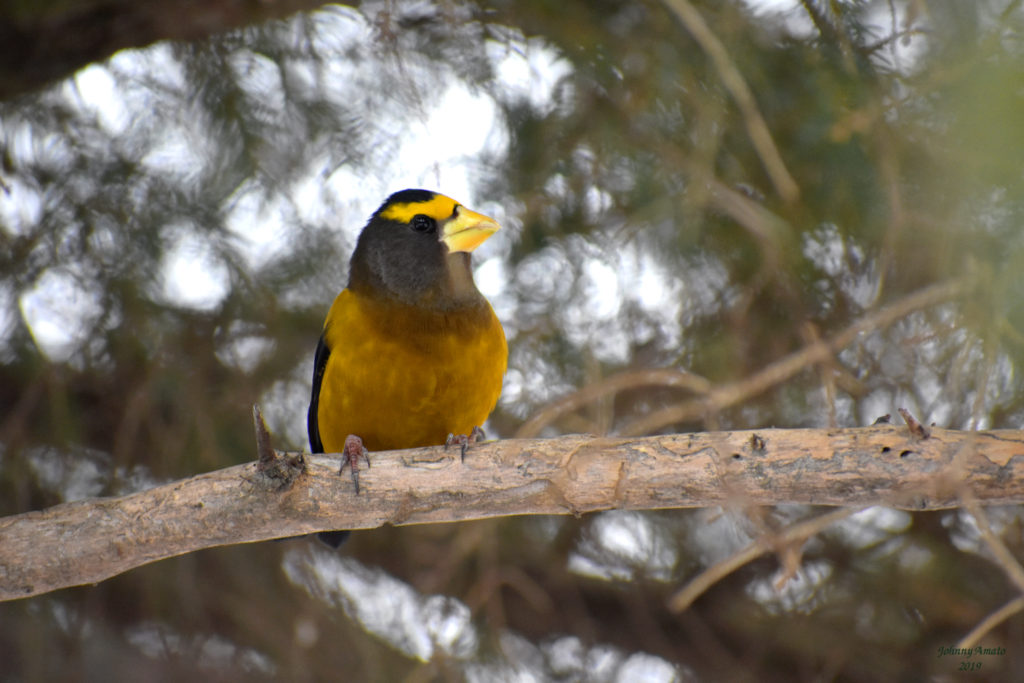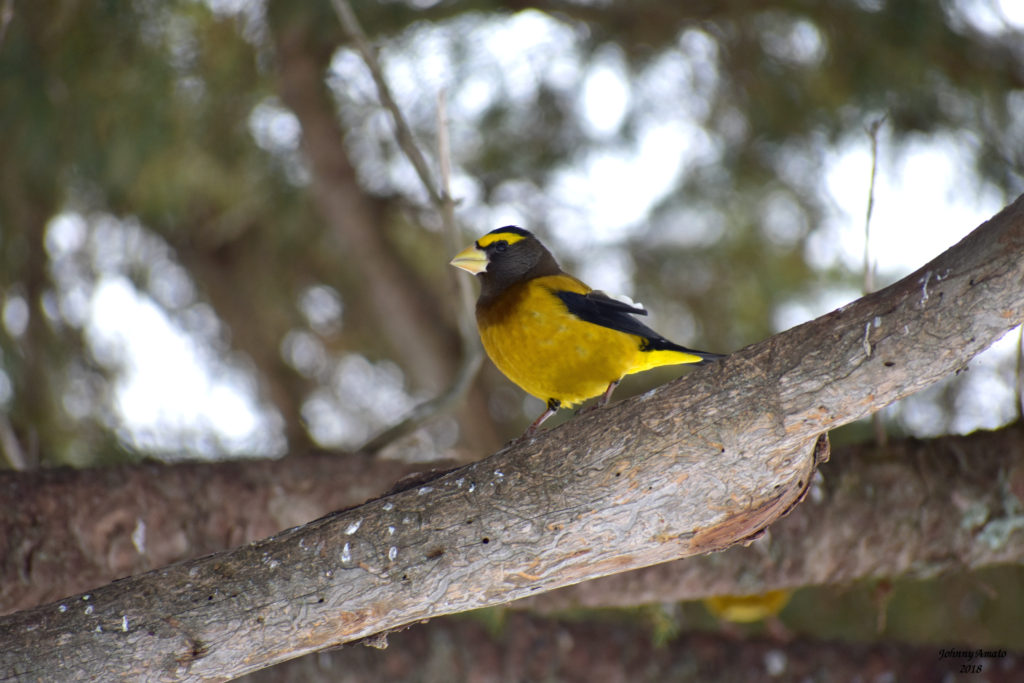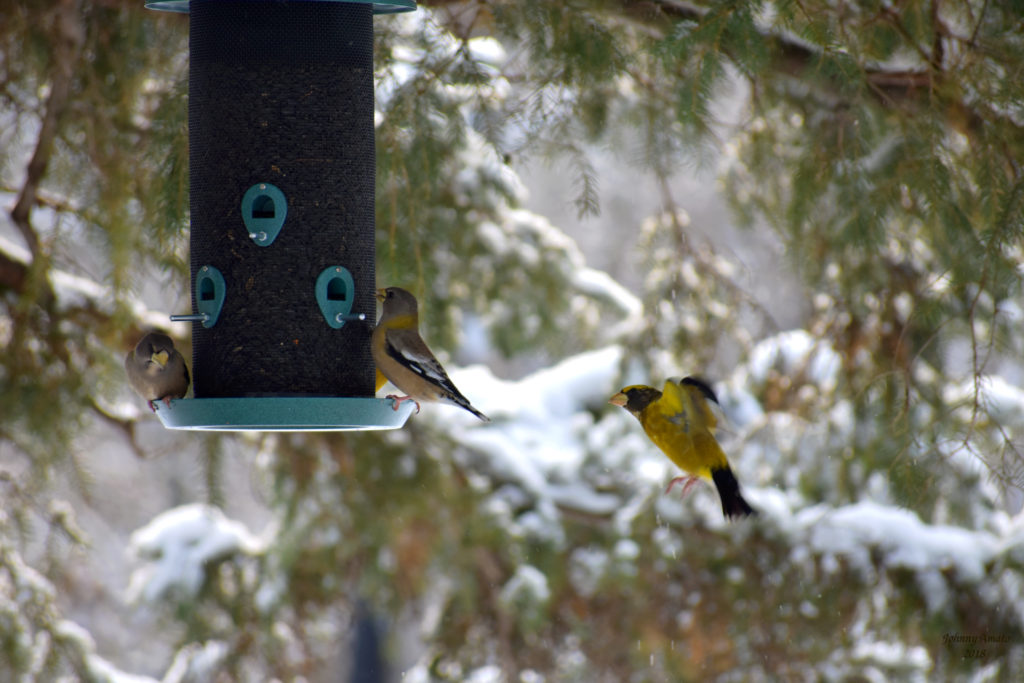It was early winter of 2018. I was at my cabin in northern Wisconsin, in the tiny town of Newald, 15 miles north of Laona. We get many species of birds; some that stay all winter or summer, some that just pass through during spring and fall during migration, and some that are sporadic and can show up at any time. One morning, my first look out the window showed a small flock of yellow birds that I recognized were not goldfinches. Goldfinches lose their bright yellow color during the winter, plus, these birds that I was seeing were bulkier and looked slightly different, even from a distance. I have heard of Evening Grosbeaks, and seen pictures, but have never seen one in person. I now had a small flock of 15-20 of them in my backyard taking advantage of all my feeders.
Although called a grosbeak, Evening Grosbeaks are actually in the finch family. They are a very erratic migrant, depending on food availability and cone crops in the northern coniferous forests of Canada and the northern United States. An irruptive species, where flocks could end up spending the winter is very unpredictable, and I was lucky in the winter of 2018 to have a small flock spend the winter near my cabin. A very skittish bird, and were rather difficult to get good pictures of, as I had a hard time getting close to them. I don’t live at the cabin, only visit for a few days a few times a month, but they were there on and off basically all winter. It was our fifth year at the cabin, and that winter was the first we’d ever seen them, and unfortunately have not seen them since. At the time of this writing it is 2022, which makes four years since they have been around. I have seen a straggler or two a few times, but they never stuck around.
Evening Grosbeaks are a beautiful bird with a strong, conical bill similar in appearance to that of true grosbeaks and cardinals. Adult males are yellow with black wings and a bright white wing patch, and dark heads with a bright yellow stripe over the eyes that somewhat resembles sunglasses. Females and juveniles are mostly grey, with a little bit of yellow around the neck area, and lack the yellow stripe over the eyes. Striking in appearance, they really stick out when seen frolicking around the evergreen trees of the north woods.


The females mostly build the nest, and incubation of the two to five eggs is also done by the female. Both parents will feed the nestlings, and the male will often feed the female as well.
Evening Grosbeaks are considered songbirds, although they do not sing a distinct song. Instead, they have a very distinct chirp that once heard, is pretty easily identifiable, and flocks can be quite noisy as they forage around and feed. Mine seemed to favor sunflower seeds, and it was a treat just to watch the flock bounce around from feeder to feeder as they got their fill. Their overall diet consists of a variety of seeds, small fruits, maple sap, and many insects in the summer. A favorite is the spruce budworm, a forest pest, and Evening Grosbeaks are credited with keeping their numbers down. They are also known to occasionally eat salt from roadsides during the winter.
Along with their sporadic, unpredictable movements, Evening Grosbeaks have a unique history. Their eastern range has expanded over the years, believed to be the result of the planting of box elders in the northeast, as they were originally known as more of a western bird. Their name came from the fact that some early observers originally assumed they only came out and sang at sunset, but this was eventually proven incorrect. By that point, however, the name was so established that it stuck, and is still used to this day.


The Evening Grosbeak’s sporadic, unpredictable movements also make them difficult to survey and study. Their populations have been decreasing; particularly in the east, possibly due to habitat loss from logging in their boreal forest home, disease outbreaks, and lower numbers of spruce budworm (a favorite summer food) as a result of aerial spraying. Even climate change is believed to be having an effect. At the time of this writing, a loosely estimated 4 million birds exist in the wild.
Every visit to my cabin, I’m always hoping the Evening Grosbeaks come back. They haven’t yet, but I patiently wait with my feeders filled with sunflower seeds knowing they probably will eventually. It’s now been four years since I’ve seen the flock, but with their movements sporadic, they could return at any time.
Johnny Amato Photography






